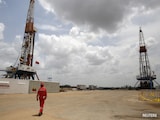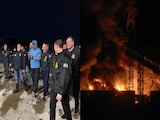With the arrival of May, mercury is soaring in India's metropolitan cities. While the national capital, Delhi, recorded 33 degree Celsius followed by Mumbai at 34 degrees Celsius, both Chennai and Bengaluru stood at 37 degree Celsius each. These rising temperatures are attributed to the urban heat-island effect, making the metro areas significantly warmer than their surroundings. But what does it exactly mean?
Urban Heat Island Effect
The urban heat island effect occurs when urban areas witness higher temperatures than their rural surroundings. This is mostly due to human activities, buildings, and infrastructure in cities that absorb and retain heat more effectively than natural landscapes.
Causes and effects
1. Materials such as concrete and asphalt in urban areas absorb heat during the day and release it slowly, causing temperatures to remain elevated, especially at night.
2. The absence of plants, trees, and green spaces in cities reduces natural cooling through shade, worsening the heat island effect.
3. Metropolitan cities have higher energy demands for things like transportation, industrial processes, and air conditioning, which release heat into the air, contributing to the urban heat island effect. All this also puts a strain on energy sources, leading to power outages when demand peaks.
4. When buildings are built adjacent to each other, it limits airflow and creates heat-trapping spaces between structures, causing higher temperatures.
5. Urban heat islands have poorer air quality because more pollutants get trapped in the city. Warm water from cities also harms the quality of nearby streams, affecting the plants and animals living there.
6. Urban heat islands may contribute to global warming by increasing overall
7. High temperatures in urban areas can lead to higher energy demands for cooling, straining energy resources and potentially causing power outages during peak periods.
Are Heat Islands the same as Climate Change?
Heat islands and climate change are not the same, but they are related.
Heat islands happen when cities are hotter than their surroundings, whereas, climate change is the long-term warming of the Earth due to gases in the air trapping heat. While heat islands don't directly cause climate change, they make cities hotter, which can make climate change effects worse.
Cities are getting hotter because of both heat islands and climate change. As more people live in cities, the problem of heat islands gets bigger. This means cities will face even more heatwaves in the future. So, while heat islands don't cause climate change, they make it worse for people living in cities.
As more people move to cities, the problem will continue to grow, making it important to find ways to cool cities down and reduce greenhouse gas emissions.















